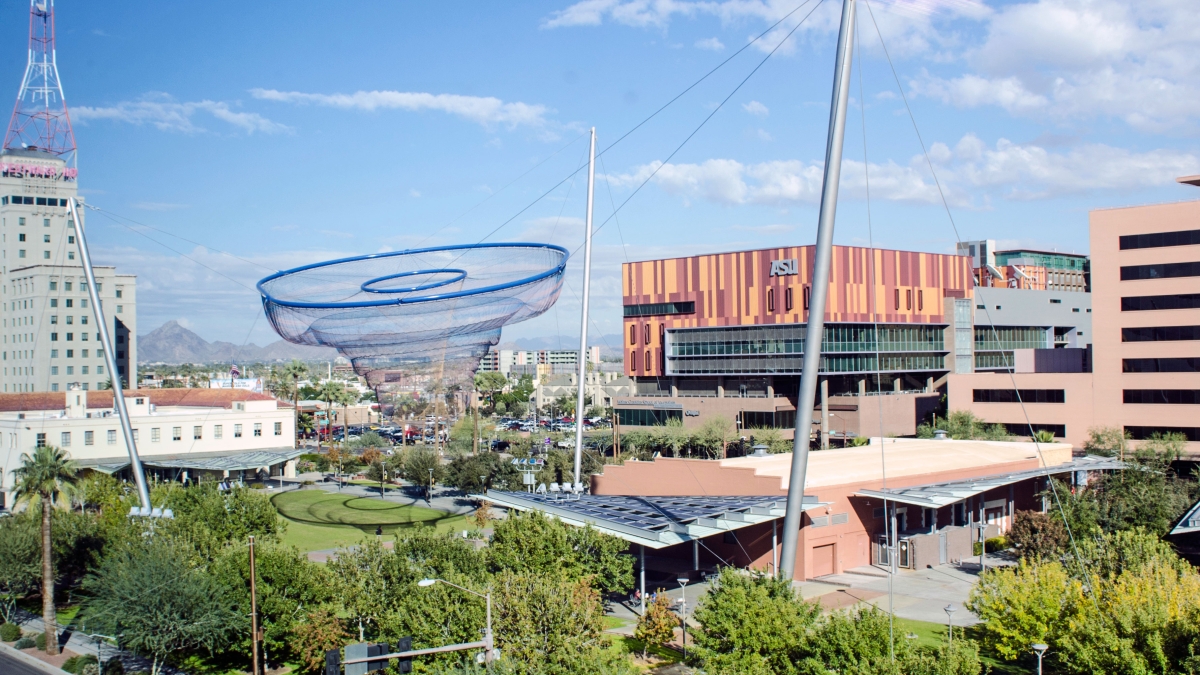How ASU has changed since Super Bowl XLII

When Super Bowl XLIX comes to town, it brings with it more than just the most-watched sporting event in the country.
More than a week’s worth of festivities will lead up to the kickoff – and most of them are taking place in downtown Phoenix, away from the big game in Glendale.
That was not the case in 2008, the last time Arizona hosted the Super Bowl.
That’s because downtown has undergone a major transformation in the last seven years, thanks in large part to the time and investment of Arizona State University.
“Over those years, and really over a short period of time, we’ve seen remarkable changes here,” said Christopher Callahan, founding dean of the Walter Cronkite School of Journalism and Mass Communication, which is located on ASU’s Downtown Phoenix campus. “ASU has certainly not been the only catalyst, but I would say a significant catalyst in the rebirth of downtown Phoenix.”
The last time the Super Bowl was here, ASU’s Downtown Phoenix campus had only been open two years, and had an enrollment of fewer than 5,000 students. The Cronkite School was still located in Tempe, and the Cityscape mixed-use development a few blocks away from campus wasn’t even built yet.
“The city was hoping that a major campus like Arizona State University would invigorate downtown with young people who were not only going to be studying here, but working here and living here," Callahan said. "I think it’s done exactly that."
Today the Downtown Phoenix campus has more than 11,000 students, and in November, ASU broke ground on the Arizona Center for Law and Society that will serve as the new home for the Sandra Day O’Connor College of Law, which is set to open in August 2016.
“ASU has brought a huge amount of vibrancy to downtown,” said David Roderique, president and CEO of the Downtown Phoenix Partnership. “I mean, obviously with [the thousands of] students, plus the faculty and staff and visitors and so on, it has created a tremendous sense of place for downtown.”
There have been many other additions since 2008 as well.
Civic Space Park, which opened in April 2009, replacing desolate storefronts and open lots, is right in the middle of ASU’s Downtown Phoenix campus and is available to the entire downtown community.
The School of Criminology and Criminal Justice and the School of Social Work moved downtown in August 2009; the College of Health Solutions opened in August 2012; and the Student Center in the historic U.S Post Office building opened in March 2013.
The Sun Devil Fitness Center opened in October 2013; the ASU School of Art in the Herberger Institute for Design and the Arts moved some of its studios in early 2014; and the Mary Lou Fulton Teacher’s College starting offering classes downtown in early 2014 as well.
“More than anything, it’s the vibe now,” said Dan Klocke, vice president of development for Downtown Phoenix Inc. “It’s the vibe where people want to be. It’s a great environment that’s getting better all the time, and I think there’s a lot of momentum, and I think that momentum creates a lot of excitement.”
Back in 2008, the Phoenix Convention Center was still under construction and there were 50 percent fewer restaurants and bars downtown, according to the Downtown Phoenix Partnership.
“Obviously you can’t add that many new businesses in that category unless you have people to support them, so ASU has been a big piece of that,” Roderique said.
ASU has also been one of the major contributors to the success of the Phoenix area’s light rail, which connects students on the Tempe and Downtown campuses.
“When President Crow set out his vision for a downtown campus in 2004, he said he wanted this to be a vibrant campus with multiple colleges and eventually up to 15,000 students," Callahan said. "At the time, people were like, ‘Wow really?’ And now we’re right on course to do exactly that."
Written by Samantha Pell, ASU News